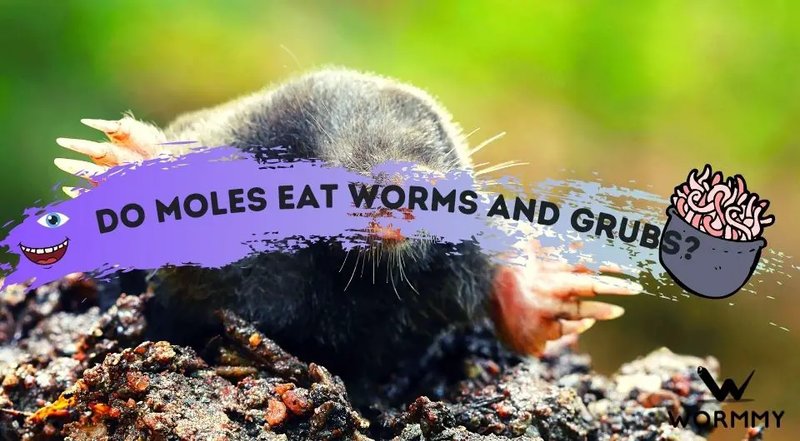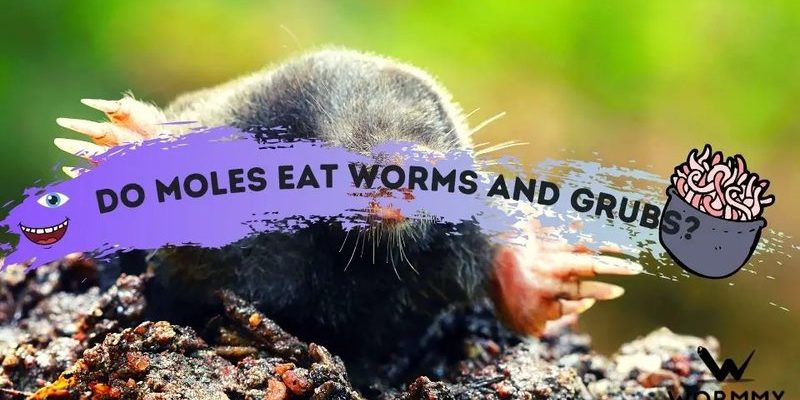
When I first learned about moles and grub worms, it felt like uncovering a secret world just beneath the surface of my lawn. Each creature plays a role in the ecosystem, but they can also lead to some pretty unsightly patches of grass. If you’re scratching your head over why your yard looks like a mini battlefield, stay with me as we explore this relationship and tackle some common questions on the way.
What Are Moles?
Moles are small, burrowing mammals known for their cylindrical bodies, short legs, and large front paws, which make them excellent diggers. They spend most of their time underground, creating vast tunnel systems that can stretch for hundreds of feet. You might think of them like miniature, furry construction workers, constantly reshaping the landscape below your feet.
Their diet primarily consists of insects, earthworms, and yes, grub worms. This means that where you find moles, you often find a buffet of tasty treats for them. Moles have an impressive way of hunting; they can smell their food through the soil and dig to it with incredible speed. If you notice mounds of dirt forming in your yard, it’s likely a sign that moles are at work, searching for their next meal.
Moles have a unique behavioral trait that makes them even more interesting. They don’t hibernate, so they’re active all year round. That means they’re constantly tunneling and searching for food. You might be wondering just how much damage they can do to your lawn—well, it’s not just cosmetic. Moles can compromise the roots of plants and grass, leading to dead patches that can be a real pain.
What Are Grub Worms?
Now, let’s talk about grub worms. These are actually the larvae of beetles, typically found in the soil. They look like small, C-shaped white worms and can cause significant damage to lawns if they multiply. Grub worms love to feed on the roots of grass, which can lead to brown patches and an overall unhealthy lawn.
Think of them as little eating machines, devouring the very foundation of your lawn. If you’ve noticed your grass thinning out or dying in certain areas, there’s a good chance some grub worms are the culprits. Just as moles love a good meal, they are attracted to areas where grub worms are present. It’s this relationship that’s key to understanding the challenges of lawn care.
Interestingly, grub worms can also serve a purpose in the ecosystem. They help break down organic matter in the soil, contributing to nutrient recycling. However, if their population explodes, they can overwhelm your yard. So, finding that balance is essential.
The Relationship Between Moles and Grub Worms
So, how do moles and grub worms connect? In simple terms, moles see grub worms as a tasty snack. When moles tunnel through your yard, they have a keen sense of where the grub worms are hiding out. The more grub worms there are, the more attractive your lawn becomes to moles.
You might think of it as a natural cycle: grub worms thrive in soft, moist soil, which is also the perfect environment for moles to create their tunnels. The presence of one often indicates the presence of the other. If your lawn is healthy and thriving, there might not be many grub worms around, and, consequently, moles will look elsewhere for food.
This relationship can create a bit of a dilemma for homeowners. While moles can be beneficial by aerating the soil, they can also lead to uneven patches and damage to your grass from digging. And if you have a significant grub worm problem, it’s a clear invitation for more moles to come calling.
How To Manage Grub Worms
To keep the mole population in check, it’s crucial to address the grub worm issue first. Here are some strategies to consider:
- Grub Control Products: There are various insecticides specifically designed to target grub worms. Look for products containing nematodes or milky spore, which can help reduce their numbers without harming beneficial insects.
- Natural Remedies: If you’re more inclined towards organic solutions, consider using beneficial nematodes or applying a mixture of soap and water to the affected areas. This can help eliminate grubs without harsh chemicals.
- Healthy Lawn Practices: Maintaining a thick, healthy lawn can deter grubs. Regularly aerate, fertilize, and water your grass to promote its strength and resilience against pests.
By taking these steps, you can significantly lower the population of grub worms, making your yard less appealing to moles.
How To Deter Moles
If you find that moles have already made themselves at home, you might want to consider a few deterrents:
- Physical Barriers: Installing underground barriers, such as hardware cloth, can prevent moles from entering certain areas of your yard.
- Repellents: Some gardeners swear by using castor oil or other natural repellents that can make your lawn less inviting to moles.
- Trapping: If all else fails, trapping is a humane way to remove moles from your property. Various traps can effectively catch moles without harming them.
Remember, moles are a natural part of the ecosystem, so think carefully about how to manage them without causing harm.
Understanding the connection between moles and grub worms is key to maintaining a healthy yard. While moles can be seen as pests, they also play an important role in aerating the soil. On the flip side, grub worms can quickly turn into a problem if left unchecked. By addressing grub worms and managing your lawn effectively, you can reduce the chances of moles making your yard their home.
As you think about your lawn care strategy, consider the balance of nature and the importance of each creature. A healthy lawn is not just about keeping pests away but understanding the ecosystem at play. By nurturing your grass and managing both the moles and grub worms, you can create a vibrant outdoor space. So, let’s get digging!

